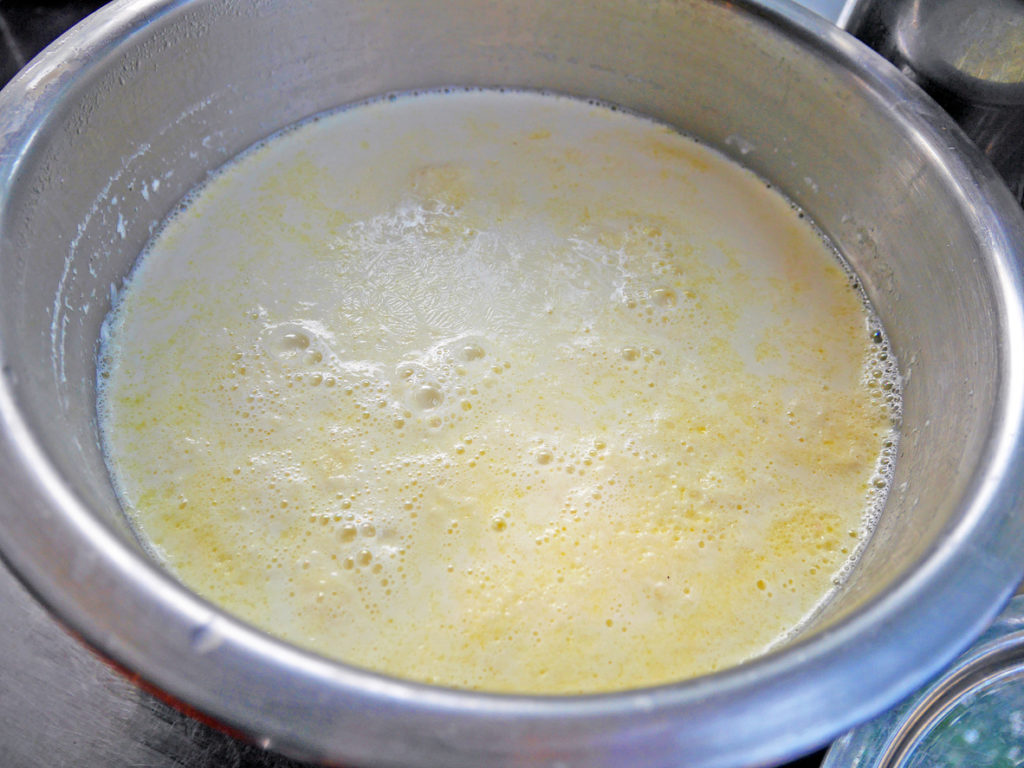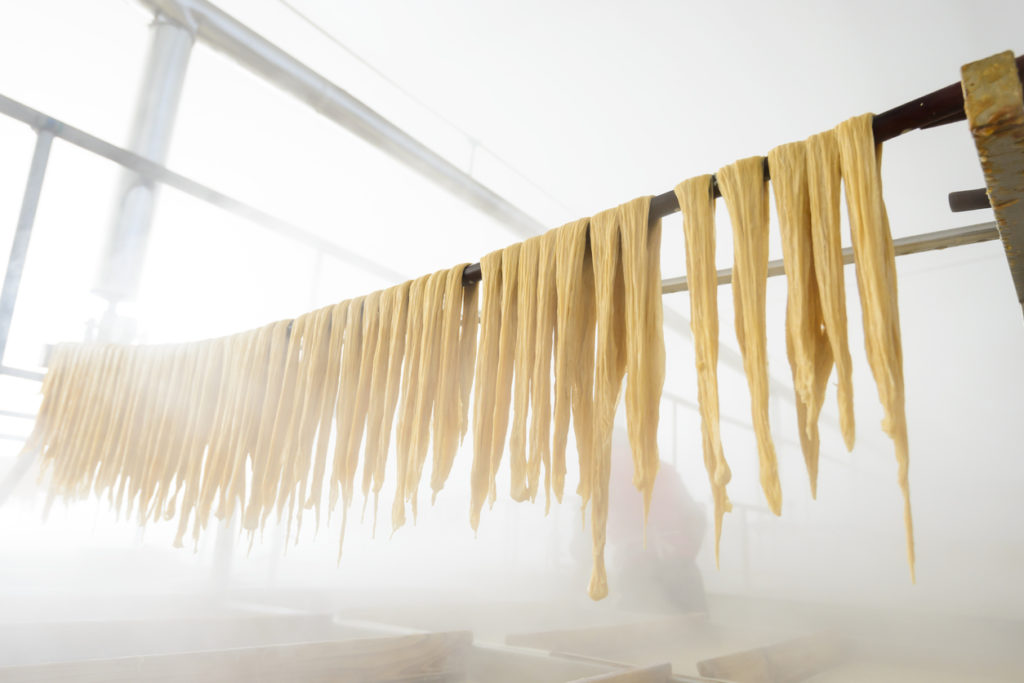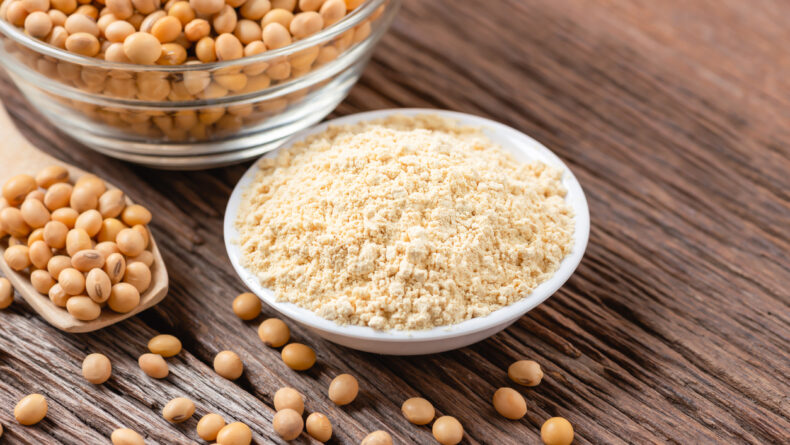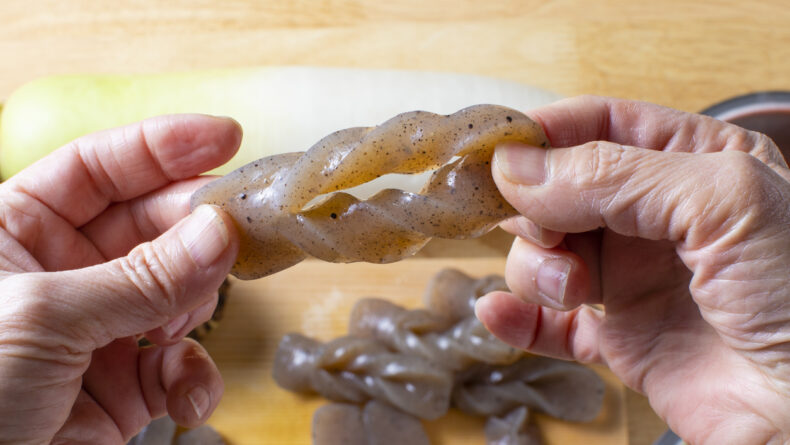Japanese Superfoods: Yuba
Japan's Most Nutritious And Versatile Food Skin
“The culinary possibilities of fresh yuba are limitless.”
It’s not a secret to anyone who knows me that I came to Japan for one reason and one reason only: tofu. But after some years, my love for it has expanded to “soybeans,” (which tofu is based on), because these miracle beans are somehow connected to most Japanese delicacies — including the versatile and nutritious tofu skin, known as yuba in Japan.
What Is It?
Yuba is the byproduct of boiled soy-milk. Just like the natural process we have all observed with heated cow’s milk, as soy-milk boils, a film (yuba) forms on the surface of the milk as the cream and protein rise to the surface. While most people discard the icky skins from cow’s milk straight-away, the Japanese keep the yuba. They love it mainly due to its nutritional value: high in protein and iron with little cholesterol, and because of its delicate form and easily adaptable natural flavor which has them (and now me) eating it from breakfast to dessert.

Soy milk with thin yuba or tofu film.
There is no place for denying it, yuba is not even slightly attractive if eaten on its own. In fact, it’s name supposedly comes from the Japanese word uba (old woman) because of its wrinkled-skin-like appearance! But, as we’ve learnt with other unattractive Japanese favorites (oyster, octopus, bitter melon, squid and the like), it’s essentially the taste that’s important. However, similar to soy-milk, tofu, and okara, yuba does not actually have much flavor. What it does have is versatility. And it’s also a delicacy — in the amount of time one pound of yuba is created, 100 pounds of tofu can be made.

The production process of yuba.
How to eat it?
Yuba typically comes in three ways: fresh, dried, and frozen. When yuba is fresh, it’s called nama yuba. You can easily prepare nama yuba at home by boiling creamy soy milk in a pot until it eventually forms a rich, fatty layer over the top. Next, scoop it up by hand or with a bamboo skewer then hang to air dry. Nama yuba can be eaten fresh like sashimi (as the photo below), on its own, or with a little soy-sauce, wasabi and ginger; or try marinating it, then adding it to salads or stir-fries or into wraps or sandwiches — the culinary possibilities of fresh yuba are limitless. Nama yuba can be crisped, turned into gluten-free and low-carb “noodles,” and substituted as a protein-rich dumpling and/or spring roll wrap as well.
Kanso (dried) yuba (pictured below) is readily available in Japanese supermarkets. Because it crumbles easily, it is best utilized when added to soups and hot pots (this is easy — literally add it in!).
Frozen yuba has a slightly rubbery texture. It becomes soft and pliable, to be used like fresh yuba when thawed and moistened.
Recipe: Simple yuba and broccoli stir-fry
Now that you know how to cook simple yuba, it’s time to get creative and incorporate it into another, slightly more sophisticated meal. The following recipe serves two.
Ingredients
- Vegetable oil
- 4 tsp minced garlic
- 4 tsp minced ginger
- 6 scallions, sliced thin
- 8 oz. fresh, frozen or dried yuba sheets (thawed, if frozen; reconstituted in cold water, if dried), cut lengthwise into ½-wide strips
- 1/2 head of broccoli, cut into florets
- 2 fresh red chillies, sliced thin
- 2 tablespoons cashew nuts
- 2 tablespoons low-salt soy sauce
- 1 lime
Instructions
- Heat oil. Add garlic, ginger, and the scallions; cook until fragrant, about 30 seconds.
- Add yuba, broccoli, and red peppers; and stir-fry for a further 4 minutes.
- Add cashew nuts, soy sauce and ¼ cup water, and cook, tossing, until almost evaporated, about 30 seconds more.
- To finish, squeeze in the juice from half the lime. Divide the stir-fry into two bowls and top with the remaining lime wedges. Then sit down and enjoy your meal! Xx















